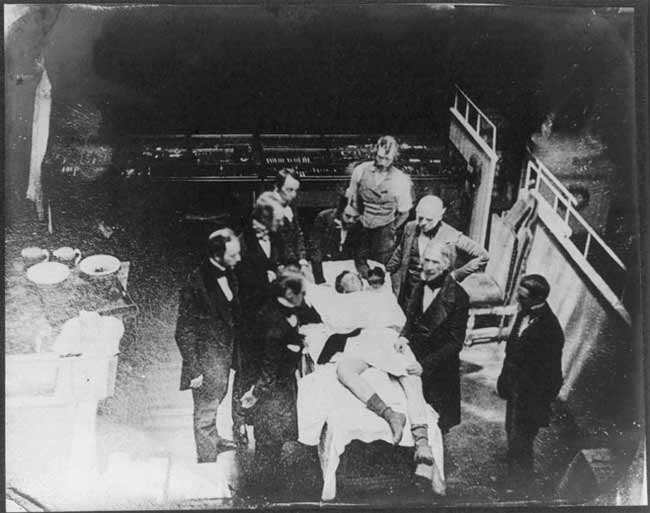Book Tells Horror of 18th Century Surgery

We all know medicine has come a long way in the past century. Now a 300-year-old guidebook, recently found on a dusty shelf, reveals how horrible things were way back then.
The book, written in 1712 and titled "Treatise of the Operations of Surgery," gives advice on such horrific procedures as amputations — before anesthesia was invented. The publication's discovery was reported today by the Daily Mail. Here are some of the gory details within, according to the British newspaper:
On amputating a leg: "Cut quick with a crooked knife before covering the stump with the remaining skin," French medical author Joseph Charriere recommended.
On treating wounds: "If the wound be only in the flesh you may bathe it with brandy and cover the part with a compressed dip in a warm wine quickened with spir vini," Charriere wrote. "If the wound is to the nervous parts you can dissolve sugar candy, camphire and myrrh in it." (Charriere was kind of onto something: A study in 2007 found wine kills germs in the mouth and throat.)
On the best time for surgery: "Either Spring or Autumn," Charriere advised. "In the Spring, the blood is revived with greater heat whilst in the Autumn blood is calm."
Surgery was a last resort in the 18th century that often resulted in infection and death anyway.
"Having a limb sawn off without anesthetic is just unimaginable," Howard Ellis, professor of surgery at the Westminster Medical School and author of "A History of Surgery," told the newspaper.
Get the world’s most fascinating discoveries delivered straight to your inbox.
Things changed in 1846 with the use of general anesthesia and again in 1867 when antiseptics to control infection came into widespread use. (Interestingly, even today scientists do not fully understand how anesthesia works.) Meanwhile, the harnessing of morphine as a painkiller in the mid-1800s was a big relief, too.
"The book would have proved invaluable to surgeons in its day — it would have been like a bible for them to use and refer to when operating," said Charles Hanson of Hansons Auctioneers.
The book will be auctioned next month.
- Maggots and Leeches: Old Medicine is New
- Yeeowww! Prehistoric Dentists Used Stone Drills
- Music During Surgery Reduces Sedation Needs
Robert Roy Britt is the Editorial Director of Imaginova. In this column, The Water Cooler, he takes a daily look at what people are talking about in the world of science and beyond.
Robert is an independent health and science journalist and writer based in Phoenix, Arizona. He is a former editor-in-chief of Live Science with over 20 years of experience as a reporter and editor. He has worked on websites such as Space.com and Tom's Guide, and is a contributor on Medium, covering how we age and how to optimize the mind and body through time. He has a journalism degree from Humboldt State University in California.
 Live Science Plus
Live Science Plus






